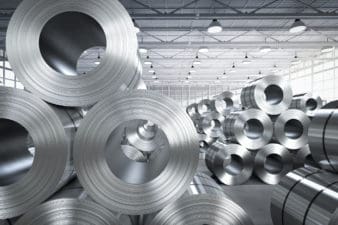This quarter has been a tough one for Labrador Iron Ore Royalty Corporation (TSX:LIF). Weaker iron ore prices coupled with a labour dispute, which had put Iron Ore Company of Canada’s mining operations on hold, created considerable uncertainty over the company’s outlook.
Nonetheless, the latest news indicates that the dispute, which started on March 27, 2018, has come to an end and operations will recommence. This is a positive outcome for Labrador Iron Ore and bodes well for its performance over the remainder of 2018.
Now what?
You see, Labrador Iron Ore is reliant on the operations of the Iron Ore Company of Canada for all of its revenue. This is because it holds a 15.1% equity interest in that company and, as a result, receives a 7% gross overriding royalty as well as a $0.10-per-tonne commission on all iron ore products Iron Ore Company of Canada produces, sells, and ships.
While the production outages triggered by the labour dispute highlight the risks that Labrador Iron Ore’s dependency on this relationship creates, it also endows it with a number of advantages that lessen many of the risks usually associated with investing in miners. This is because Labrador Iron Ore does not engage in mining; instead, it is paid an off-the-top royalty, which Iron Ore Company of Canada is obliged to pay whether it is profitable or not. That helps to reduce the impact of weaker iron ore prices on Labrador Iron Ore’s earnings.
However, because of the $0.10-per-tonne commission on all sales made by Iron Ore Company of Canada, Labrador Iron Ore also benefits when prices are high, because they create an incentive for the miner to boost production.
There are signs that demand for iron ore, notably from China, will firm over the remainder of 2018 and into 2019, boding well for Labrador Iron Ore’s earnings growth. Strong underlying demand for steel in China is causing consumption of iron ore to grow at a solid clip, leading to a marked decline in local inventories for both steel as well as iron ore. This triggered a notable increase in China’s May 2018 iron ore imports, which rose by almost 14% compared to a month earlier.
That — along with growing potential supply-side constraints — bodes well for not only greater demand from the world’s single largest consumer of iron ore but also the metal’s prices.
It is feasible to see Iron Ore Company of Canada stepping up production, as it focuses on making up for lost output due to unexpected outages so as to take full advantage of the increasingly bullish outlook for iron ore. That would be a boon for Labrador Iron Ore and give its earnings a solid lift.
So what?
The end of the labour dispute combined with a promising outlook for iron ore and the fact that Labrador Iron Ore’s share price has dipped by almost 6% for the year to date has created an attractive investment opportunity. In the meantime, patient investors will be rewarded by Labrador Iron Ore’s regular dividend, which yields just under a tasty 6%. While the production outages and their impact on the company’s earnings likely mean there will be no special dividends paid for the foreseeable future, Labrador Iron Ore is an appealing investment.





